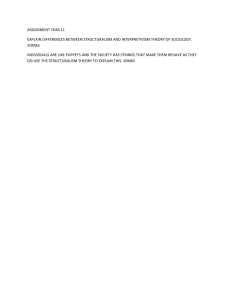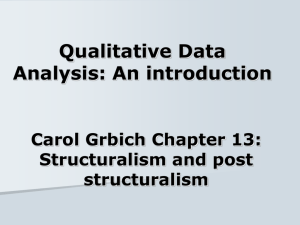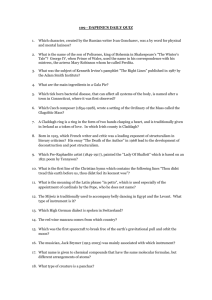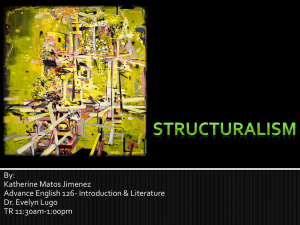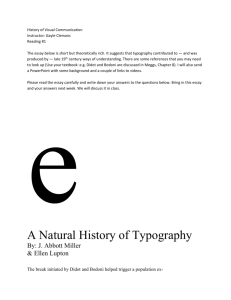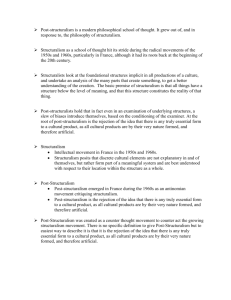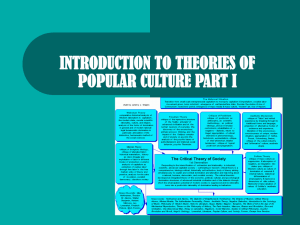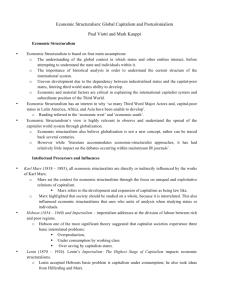Referee#1
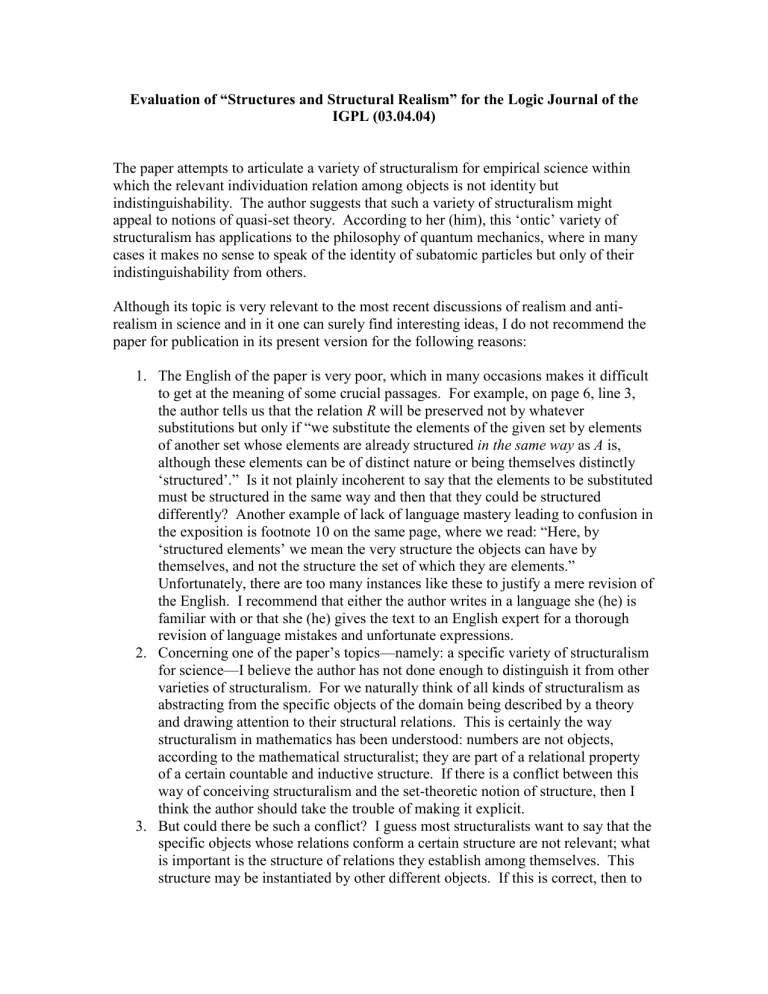
Evaluation of “Structures and Structural Realism” for the Logic Journal of the
IGPL (03.04.04)
The paper attempts to articulate a variety of structuralism for empirical science within which the relevant individuation relation among objects is not identity but indistinguishability. The author suggests that such a variety of structuralism might appeal to notions of quasi-set theory. According to her (him), this ‘ontic’ variety of structuralism has applications to the philosophy of quantum mechanics, where in many cases it makes no sense to speak of the identity of subatomic particles but only of their indistinguishability from others.
Although its topic is very relevant to the most recent discussions of realism and antirealism in science and in it one can surely find interesting ideas, I do not recommend the paper for publication in its present version for the following reasons:
1.
The English of the paper is very poor, which in many occasions makes it difficult to get at the meaning of some crucial passages. For example, on page 6, line 3, the author tells us that the relation R will be preserved not by whatever substitutions but only if “we substitute the elements of the given set by elements of another set whose elements are already structured in the same way as A is, although these elements can be of distinct nature or being themselves distinctly
‘structured’.” Is it not plainly incoherent to say that the elements to be substituted must be structured in the same way and then that they could be structured differently? Another example of lack of language mastery leading to confusion in the exposition is footnote 10 on the same page, where we read: “Here, by
‘structured elements’ we mean the very structure the objects can have by themselves, and not the structure the set of which they are elements.”
Unfortunately, there are too many instances like these to justify a mere revision of the English. I recommend that either the author writes in a language she (he) is familiar with or that she (he) gives the text to an English expert for a thorough revision of language mistakes and unfortunate expressions.
2.
Concerning one of the paper’s topics—namely: a specific variety of structuralism for science—I believe the author has not done enough to distinguish it from other varieties of structuralism. For we naturally think of all kinds of structuralism as abstracting from the specific objects of the domain being described by a theory and drawing attention to their structural relations. This is certainly the way structuralism in mathematics has been understood: numbers are not objects, according to the mathematical structuralist; they are part of a relational property of a certain countable and inductive structure. If there is a conflict between this way of conceiving structuralism and the set-theoretic notion of structure, then I think the author should take the trouble of making it explicit.
3.
But could there be such a conflict? I guess most structuralists want to say that the specific objects whose relations conform a certain structure are not relevant; what is important is the structure of relations they establish among themselves. This structure may be instantiated by other different objects. If this is correct, then to
speak of indistinguishable objects from the point of view of a structure is a triviality since all sets of objects that are apt to occupy a certain fixed position in a structure are thereby indistinguishable as far as the structure is concerned. If this is so, then the author should offer us a new motivation behind the new mathematical tool she (he) puts forward—quasi set theory—supposedly in order to deal with structurally indistinguishable objects.
4.
I wonder why the author does not mention and discuss some of the literature on scientific structural realism. For example, John Worrall’s “Structural realism: the best of both worlds?” and some of his other papers on this topic represent a serious lack in the bibliography of the paper. I would have expected at least an explanation of why some of the bibliography on structural realism is left out.
5.
As far as the mathematical results are concerned, I am not completely satisfied with the paper’s presentation either. For example, there is an axiom of weak extensionality for quasi-sets. In standard set theory, the axiom of extensionality gives the criterion of identity of sets by relating it to the identity of its elements.
As we cannot in general talk about identity in quasi-set theory, I think we should not use the word ‘extensionality’ to refer to the criterion of indistinguishability of
2 sets. Theorem 3.1 is called ‘unobservability of permutations’. Would it not be more faithful to what had been seen said before to call it the indistinguishability of permutations? My worry here is that the discernable character of a thing in comparison with something else may not necessarily have to do with observable differences between them. Something more, I think, needs to be said about the relevance of Theorem 4.1 for the cases that interest the author. For example, an illustration showing how it would solve the author’s problems in the quantum mechanical examples.
